Blog 25
30th July – 2nd August
Ken Sai Border Post (Uzbekistan) to Khujand (Tajikistan)
Distance: 402km
Total Distance: 8203km
Surrounded by high mountains (such as those I just crossed in Kyrgyzstan), the Fergana Valley is an extremely fertile, densely populated enclave divided between Uzbekistan, Kyrgyzstan and Tajikistan.
Silk Road travellers from east and west converged in the Fergana Valley to trade locally made goods and access its rich array of natural resources. Today, as throughout its history, the 300km x 140km region is home to a diverse blend of ethnic groups.
It is the great rivers – the Naryn River and the Kara Darya, which converge to form the Syr Darya in the Fergana Valley – that are responsible for the region’s fertility. The rich soil is due to silt that has washed down from the mountains over time, and the abundant water sources used for irrigation.
In Soviet times, the production of thirsty crops such as cotton, rice and different fruit was ramped up adding unsustainable pressure on water resources. With the break up of the Soviet Union, national boundaries were drawn along ethnic lines, but these borders were particularly difficult to define in the Fergana Valley. As a result, conflicts over who owns and manages the resources have bubbled up at times – thankfully it is a peaceful place at the moment. The discovery of oil added fuel to the fire.
Days 128, 129; Ken Sai border via Namagan to Margilan – 45km, 118km
I followed the course of the Naryn River across the Ken Sai border post into Uzbekistan where we were met by Ilhom, who has been a guide for the team twice before on the journey, and Djamshid, the driver. Starting pedalling at approximately 5pm, I needed to put a couple of hours of solid cycling in to reduce the distance I had to cover the next day to be able to reach Margilan. I mostly followed the south bank of the Naryn River – the river actually being the borderline in places) and then in between the Naryn and Kara Darya, the Syr Darya’s second biggest tributary. The land was constant villages and green fields of cotton, wheat and many fruit and vegetables. This region doesn’t usually see travellers and tourists and so when we went to find a place to stay, there were no options. We marked the point where I stopped cycling and ventured into Namagan, Uzbekistan’s second largest city, to find accommodation.
I returned to the point where I stopped cycling and continued my journey. About 10km along is the confluence of the Naryn River and the Kara Darya – the point where the Syr Darya begins.
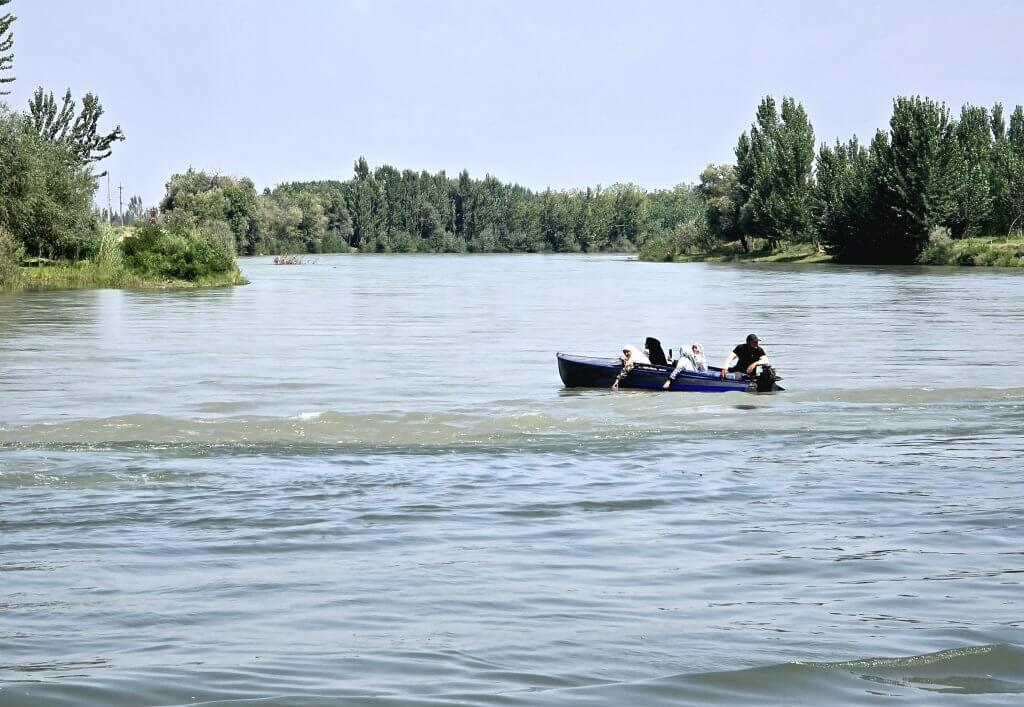
We continued along the north bank of the Syr Darya to the ancient ruins of Aksikent. According to historical data, the city emerged in the 3rd-2nd centuries BCE, around the time of Alexander the Great. It was the capital of the Fergana Valley in the 9th and 10th centuries. Aksikent was destroyed by the Mongols in 1219 and New Aksikent was built 5km-7km west of the former site, between the 14th and 17th centuries. Djamshid led us a back way to the site along a track that was blanketed with bulldust. His car, myself and the bike were subsequently covered in the fine dust. Aksikent is currently a building site. Some of the most important excavations are covered and a new development is under construction to both preserve the ruins and make it an accessible historical park for visitors. We found our way through the back door – a builder let us in – otherwise the site was closed).
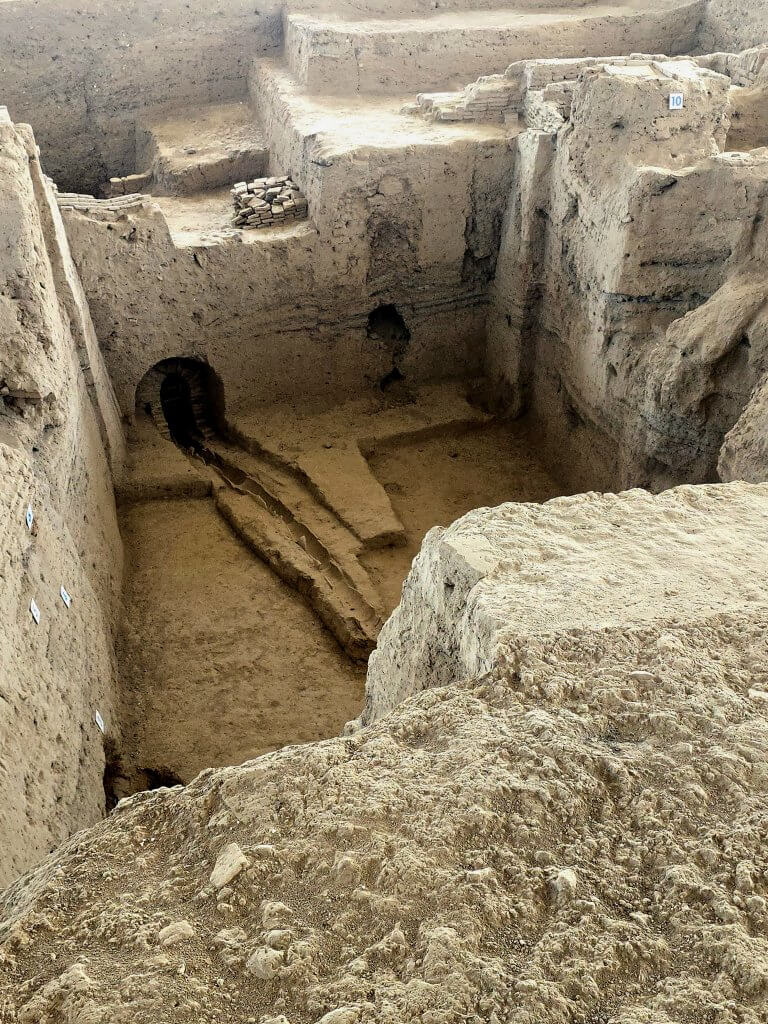
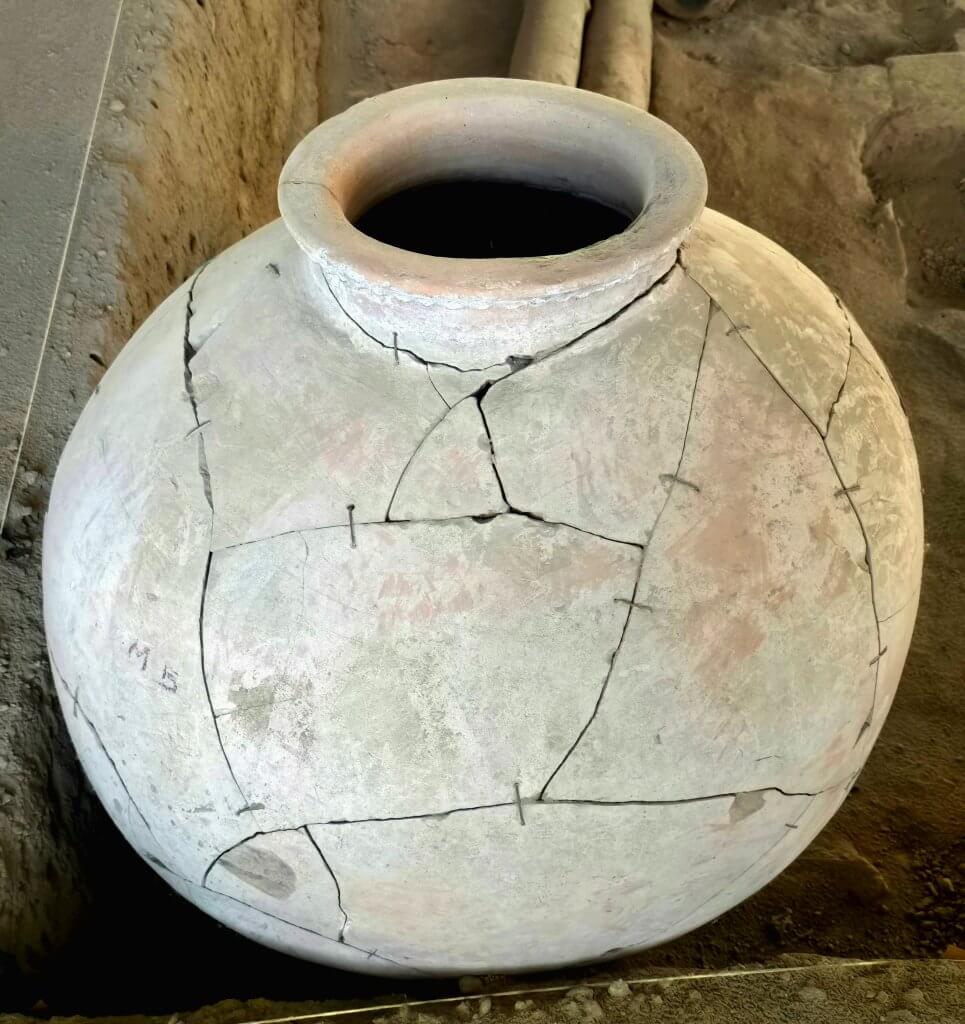
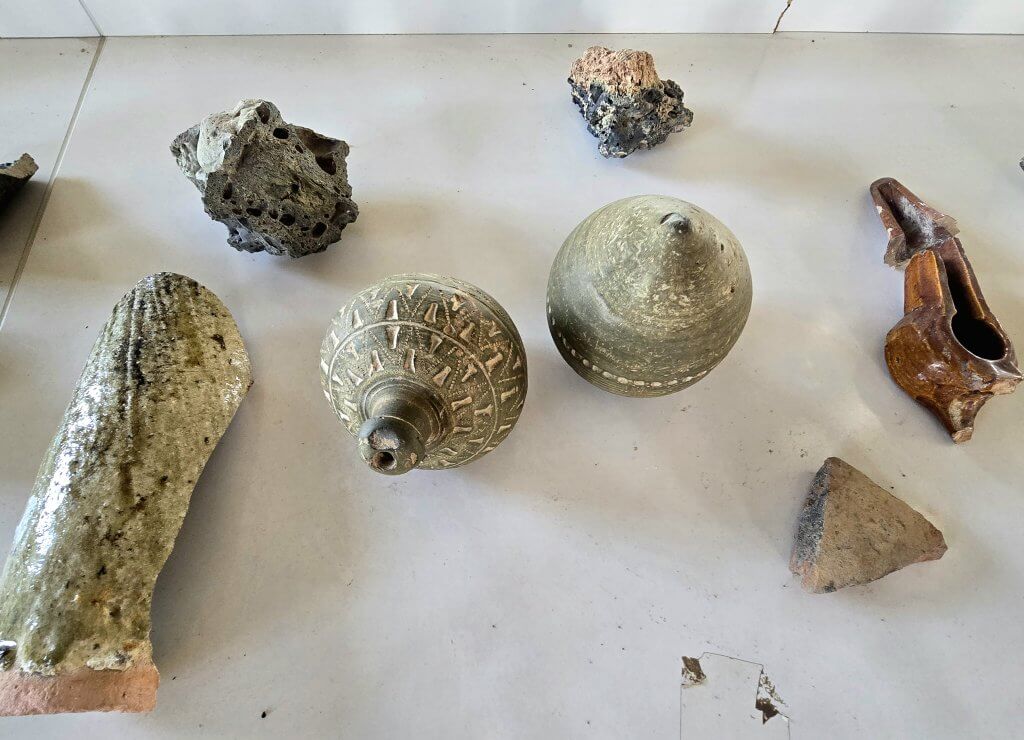
Next on the agenda was to try to locate the site of the Mingbulak Oil Spill, the fifth largest oil spill in history and the worst ever oil spill on land when 88 million gallons of oil were released from Well #5 over a two month period. It occurred just after the break up of the Soviet Union in 1992. Dykes were hurriedly built to contain the spread of oil over the surrounding fields however oil did enter the Syr Darya. A fire burned for two months until the oil stopped flowing by itself.
I was interested to find the spot and see any evidence of the spill and its effects. I had not been able to find any details of the exact location on the internet so the team asked locals in a villlage near to where some current exploration is happening. At first, no one was able to give us any information – I wondered whether there was a reluctance to disclose any information. It was just over 30 years ago, so some people should remember. Eventually we managed to get some details and found the site, not very far from the route to Margilan.
There was no oil extraction happening – the security guard at the entrance said they were currently exploring for more oil. He could not allow us to enter the site without the permission from his boss and was unfortunately unable to let us on the site. He pointed to where the accident occurred but said there was nothing to see now. It was amazing top think that where we were standing would have been under the oil slick. However, the area that we could see had been cleaned up long ago.
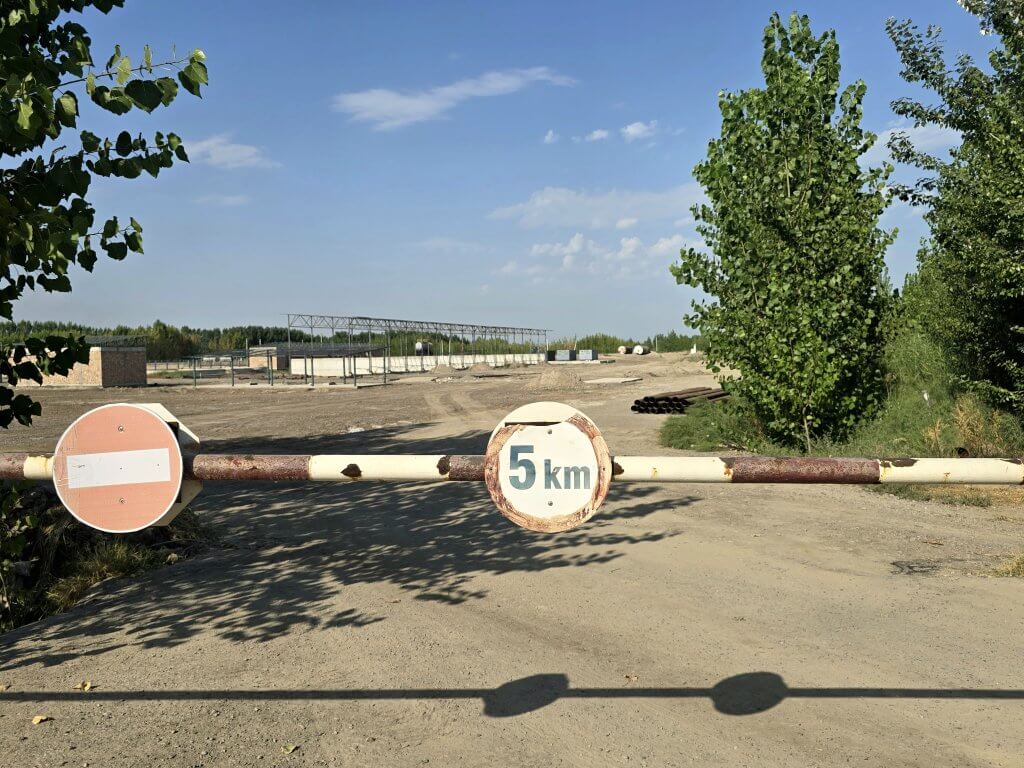

From the Mingbulak site I had to step on the gas myself as I still had 70km to get to Margilan where we planned to stay – I just made it, manoeuvring through busy traffic at last light (7.45pm). Margilan, an historic city of 150,000 people is a religiously conservative city, most famous as the centre of silk production in the Fergana Valley.
Days 130, 131: Margilan to Kokand, Kokand to Beshariq – 78km, 33km
I had diverted there to visit Yodgorlik Silk Factory to see how silk is produced – an important inclusion in the story considering I am featuring the heart of the Silk Roads.
It all starts with a specific type of mulberry tree – silk worms will only eat a certain type of mulberry leaf. Silk worm cocoons which resemble an elongated cotton ball, are harvested and then boiled to soften the silk thread.
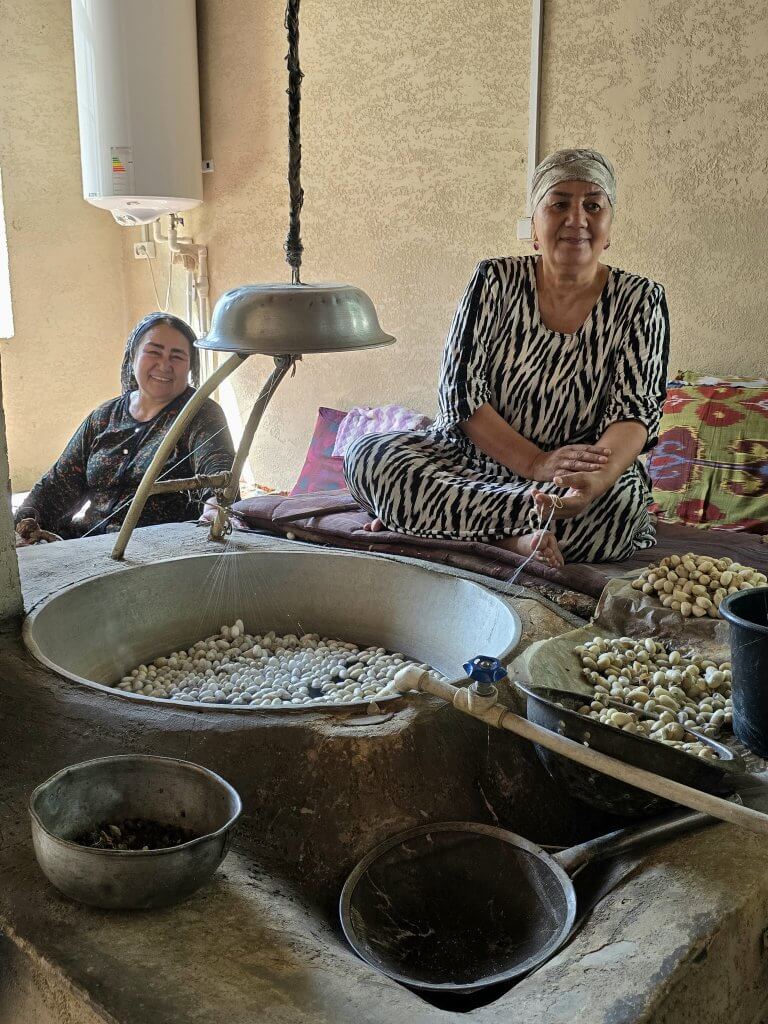
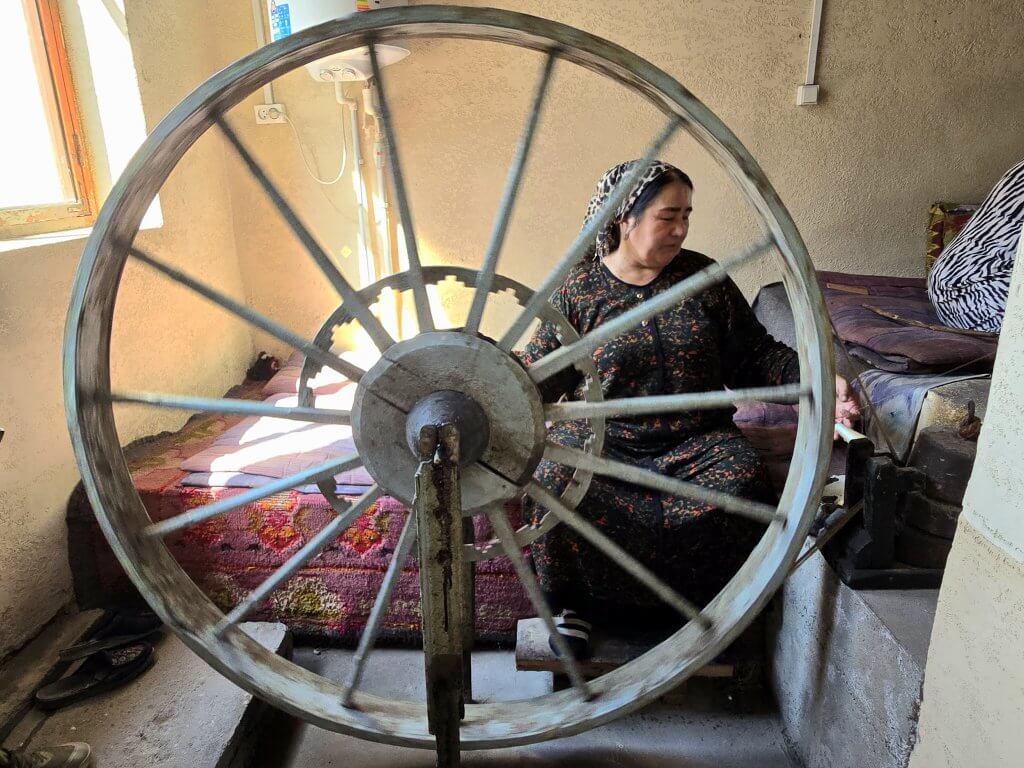
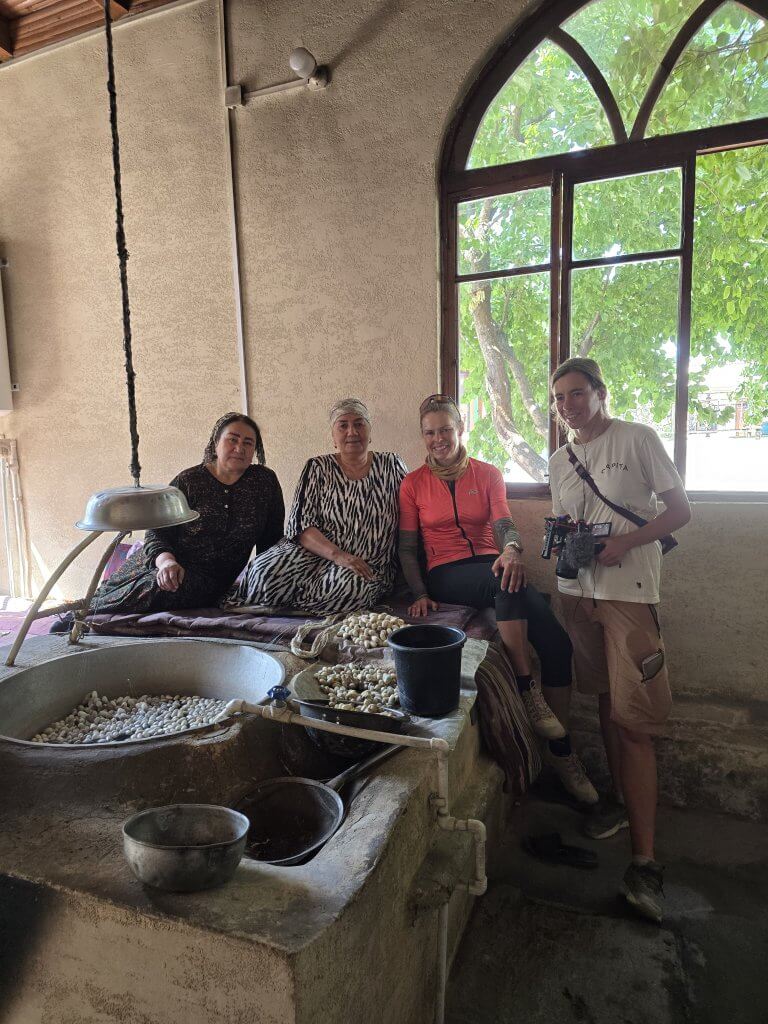
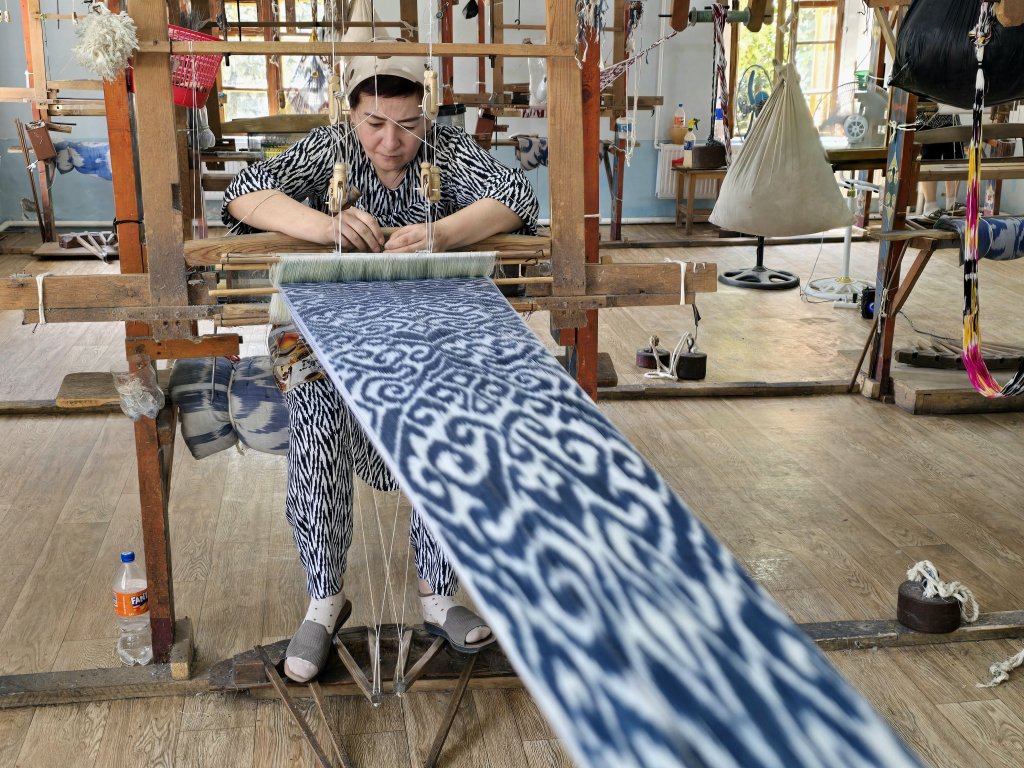
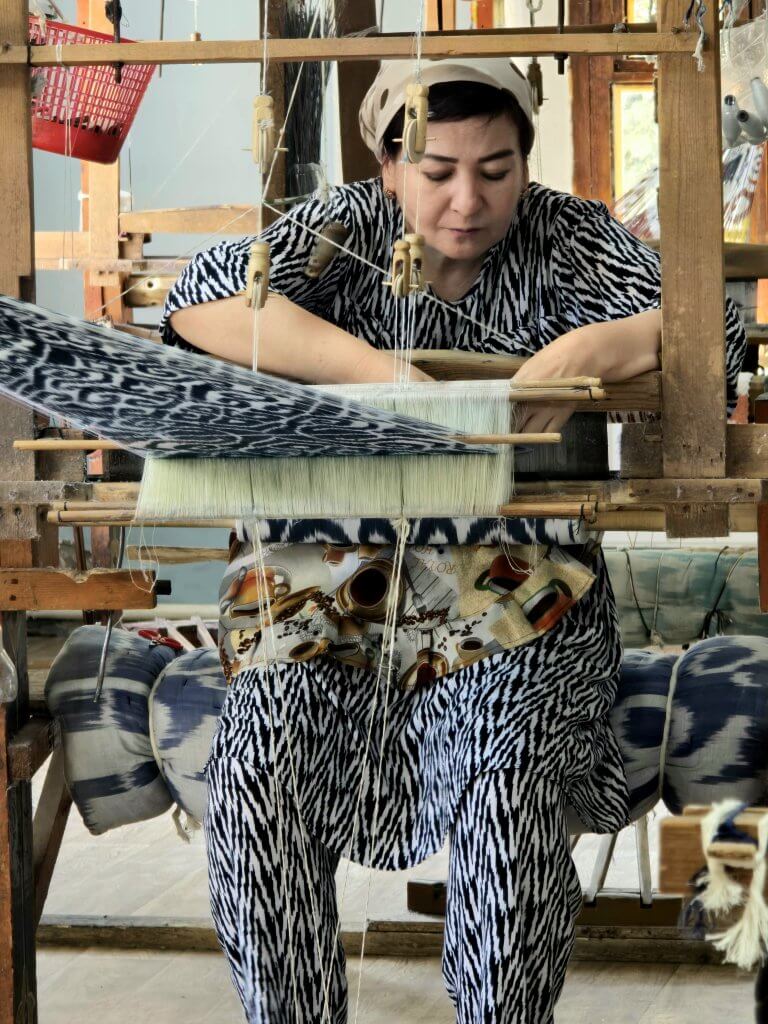
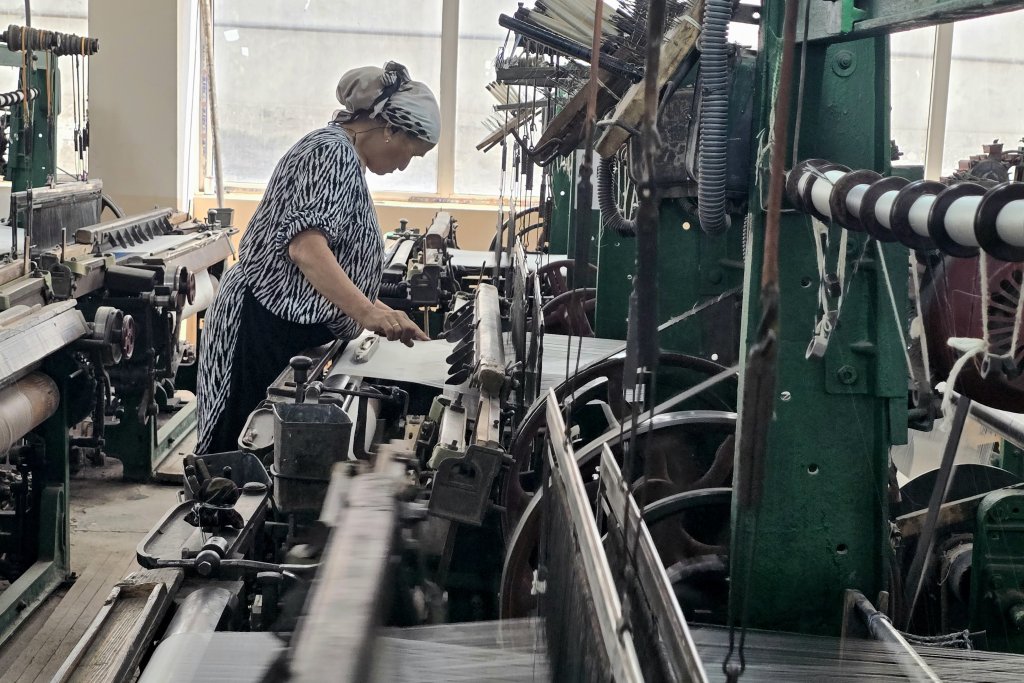
After our tour of the silk factory, I set off for Kokand, about 80km away, pedalling across fertile plains and near to an industrial zone. Kokand has been a crossroads for two different Silk Road routes, and one of the most important culturally and economically. Kokand was the seat of a powerful Khanate, one of three in Central Asia, the others being the khanates of Khiva and Bukhara (the most powerful kingdom).
We visited the impressive Palace of Khudayar Khan, the last Khan of the Khanate of Kokland before Imperial Russia conquered the Khanate. Most of the palace’s 119 rooms, including the harem, was destroyed by the Soviets – just 19 rooms remain.
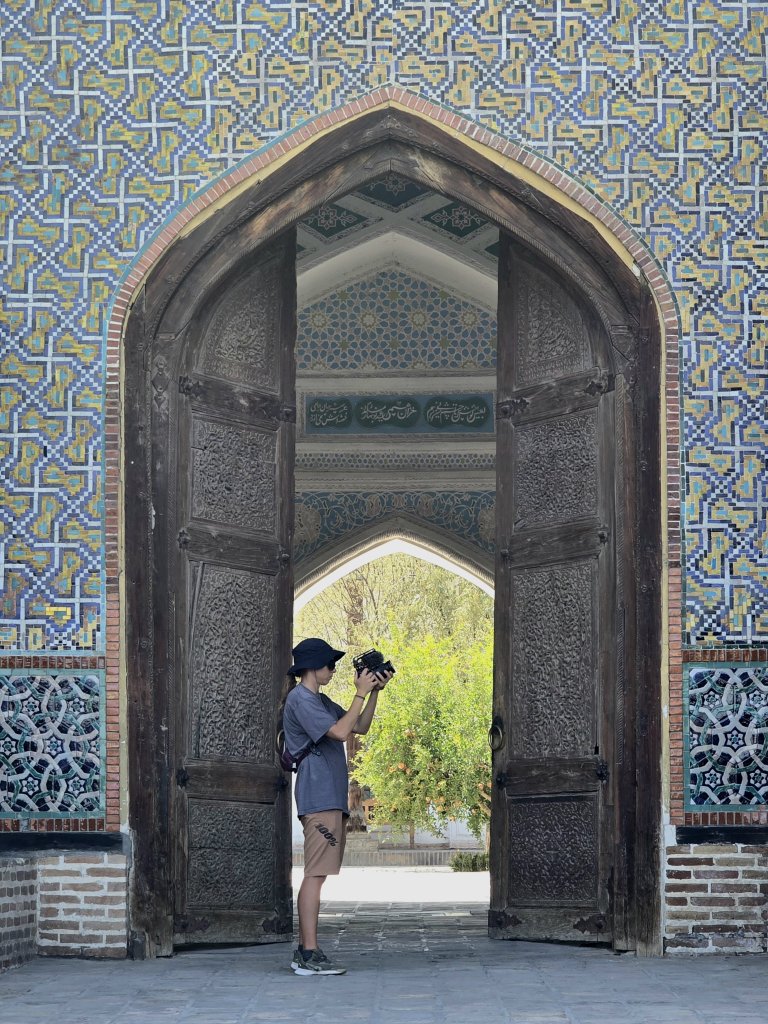
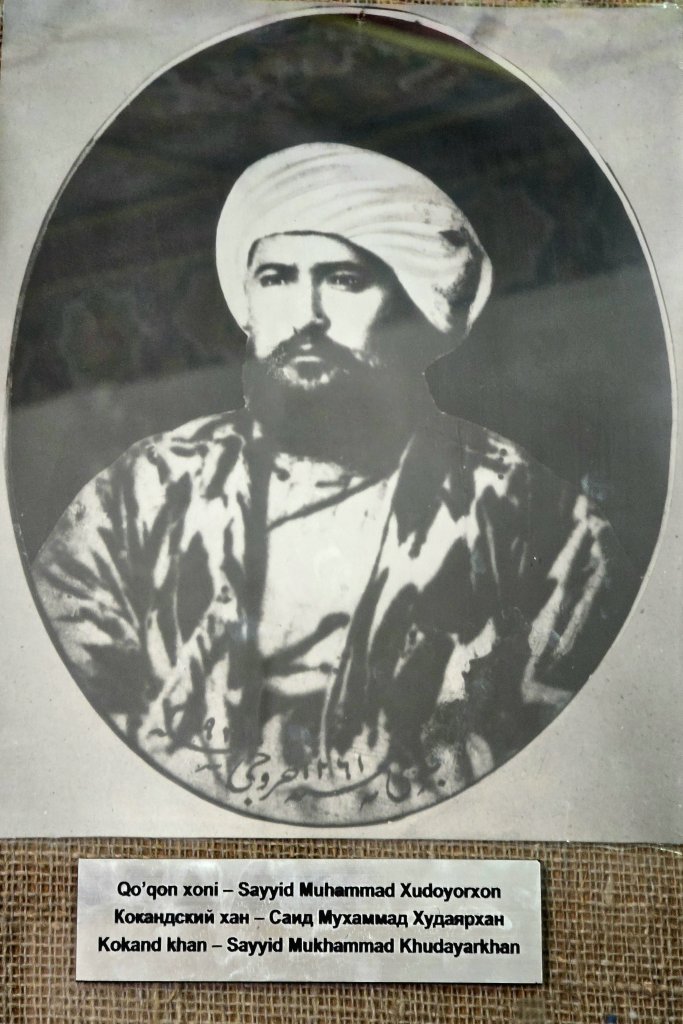
While I was able to see a few sites in Kokand on a half-day off, I needed to cycle a short distance towards the Tajikistan border to make reaching Khujand the next day possible – it was just 33km, but into a nagging headwind, I had to work much harder than I wanted to.
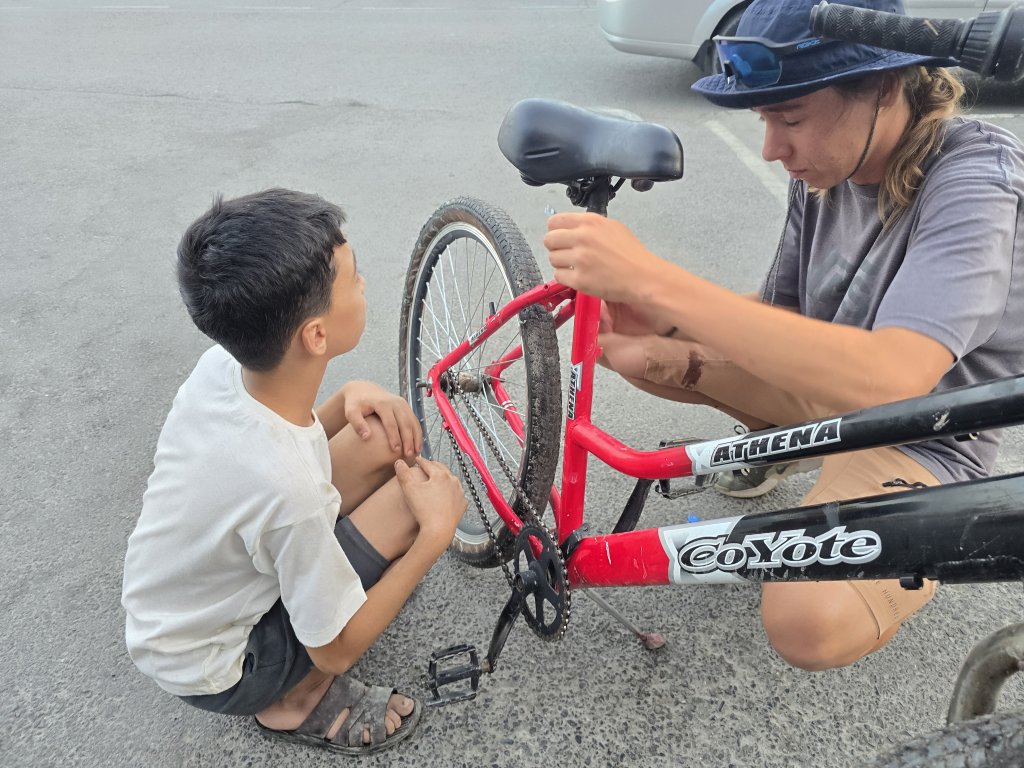
Day 132: Beshariq to Khujand – 109km
We crossed back into Tajikistan where Karim was waiting for us, to support the final section of the journey. Getting to Khujand didn’t come easy – I had to push into a strong headwind for 90km, on poor quality roads with busy traffic. It was mostly gentle rolling hills, dry mountains in the distance of both sides and crops of fruit trees, wheat, cotton, maize and sunflowers.
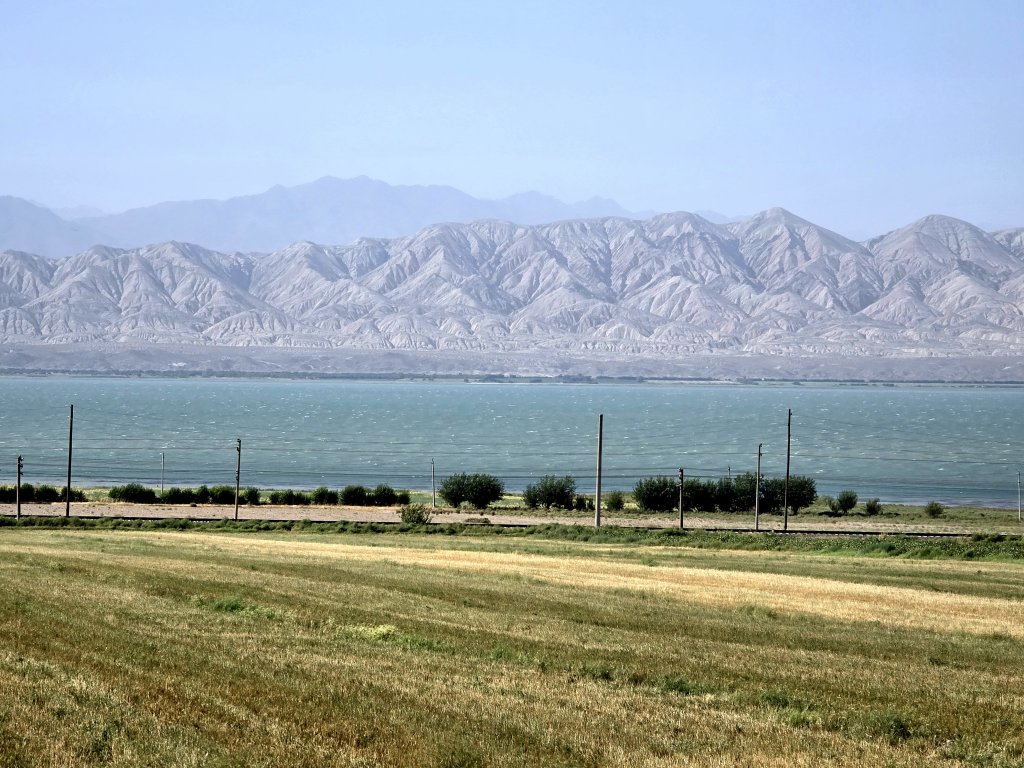
Finally, I rounded the reservoir and changed direction ,, heading north towards Khujand. The last 20km was completed in quicker time, on new roads with a steady flow of traffic. I reached the banks of the Syr Darya, at the point where I started cycling on 24th March, at sunset. It was perfect! It felt incredibly satisfying to have completed the full circuit, following the Naryn River/Syr Darya from its source to the Aral Sea, around the Aral Sea, and back along the Amu Darya and its main tributaries to one of the sources in the Pamirs. We celebrated with a nice meal in an excellent restaurant in the old part of Khujand.
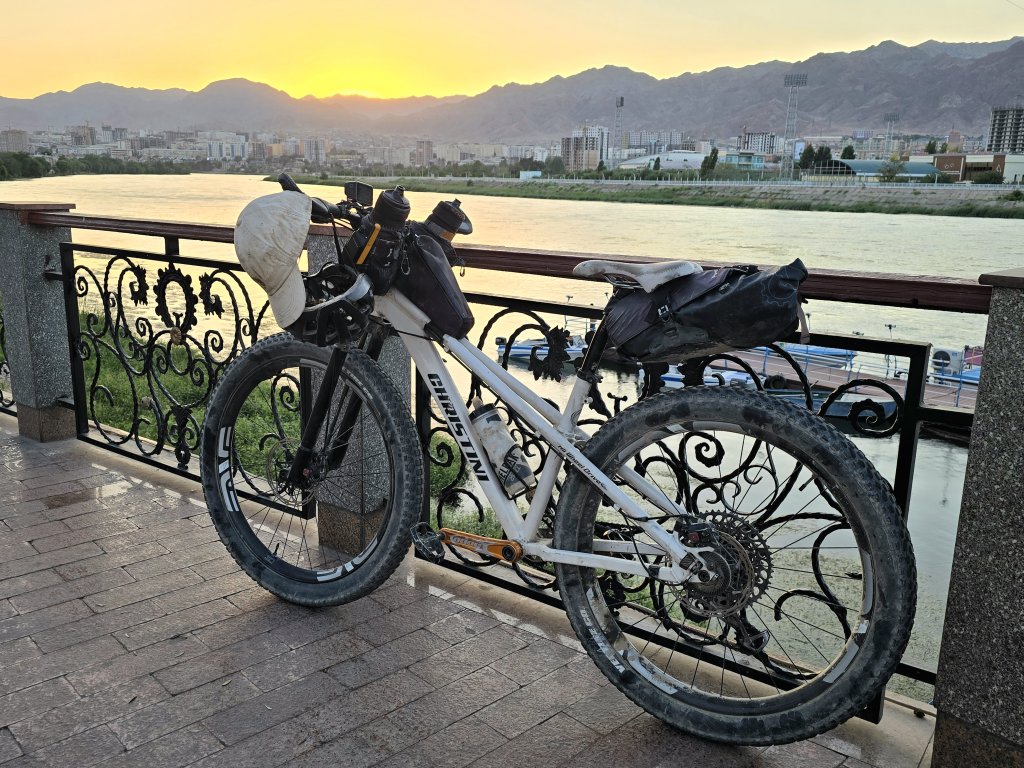
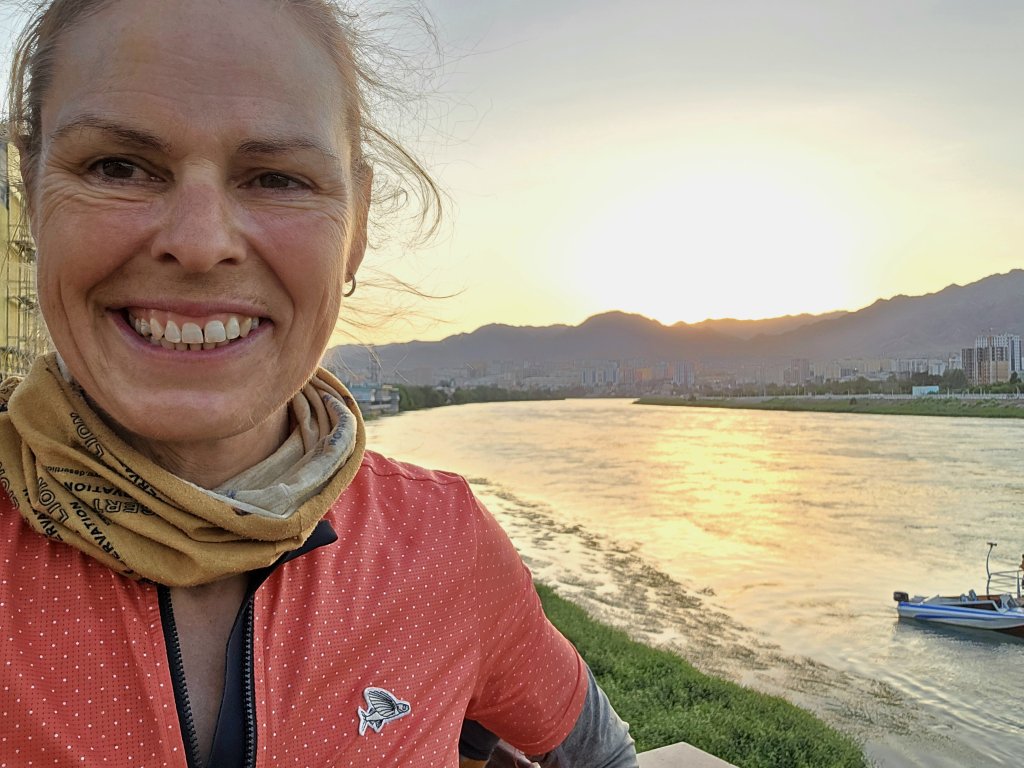
All that is left to do is final the two-week phase through Afghanistan to finish the journey at the true source of the Amu Darya (Oxus River).
Karim drove us back to Dushanbe. Anna left for Switzerland last night after crossing paths with Adrian Dmoch, who will film the Afghanistan stage. Tomorrow (5th August) we will be driven down to the village of Dusti, 23km from the Shir Khan border crossing. It’s the nearest point that I reached on my way through to the Pamirs. I will cycle the 23km to the border to connect the line of my journey, and then on 6th we will cross into Afghanistan where we will be met by Azim, our guide for the first part of the journey.
FOLLOW THE JOURNEY
Thanks to ZeroSixZero, you can open this URL on your phone and select “add to home screen” and the map will become and app. You can then keep updated in real time: https://z6z.co/breakingthecycle/central-asia
TAKE ACTION
Support my Water.org fundraiser to help bring safe drinking water and sanitation to the world: Just $5 (USD) provides someone with safe drinking water or access to sanitation, and every $5 donated to my fundraiser will enter the donor into the Breaking the Cycle Prize Draw. https://give.water.org/f/breakingthecycle/#
EDUCATION
An education programme in partnership with Exploring by the Seat of Your Pants, with contributions from The Royal Geographical Society and The Duke of Edinburgh’s International Award Australia. We have created a Story Map resource to anchor the programme where presentations and updates will be added as we go.









Morning Kate,
How are the knees? Mine get sore just reading what you are doing.
Winter has been cold but I think we have now passed the worst of it & are starting to have some good clear days with a bit of sun as we prepare for the footy finals !!! Pies and Crows in the GF with the Lions as a wild card !!
The northern hemisphere seems to have had a very hot summer so I trust in your area the UV is not right up there as well.
Stay safe. Cheers,
Phil